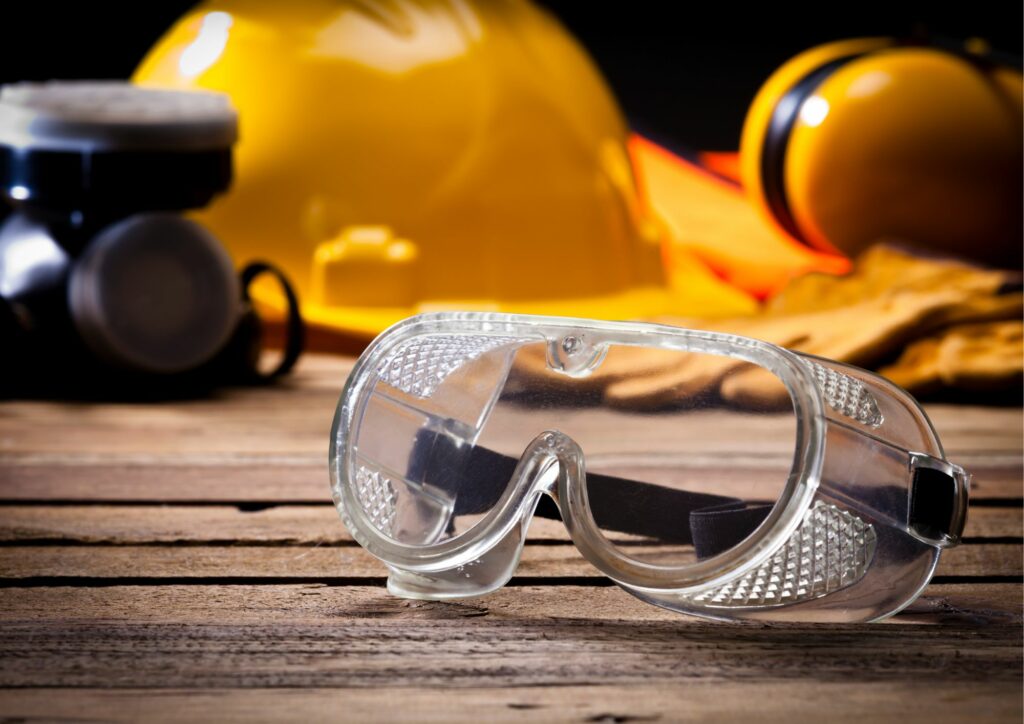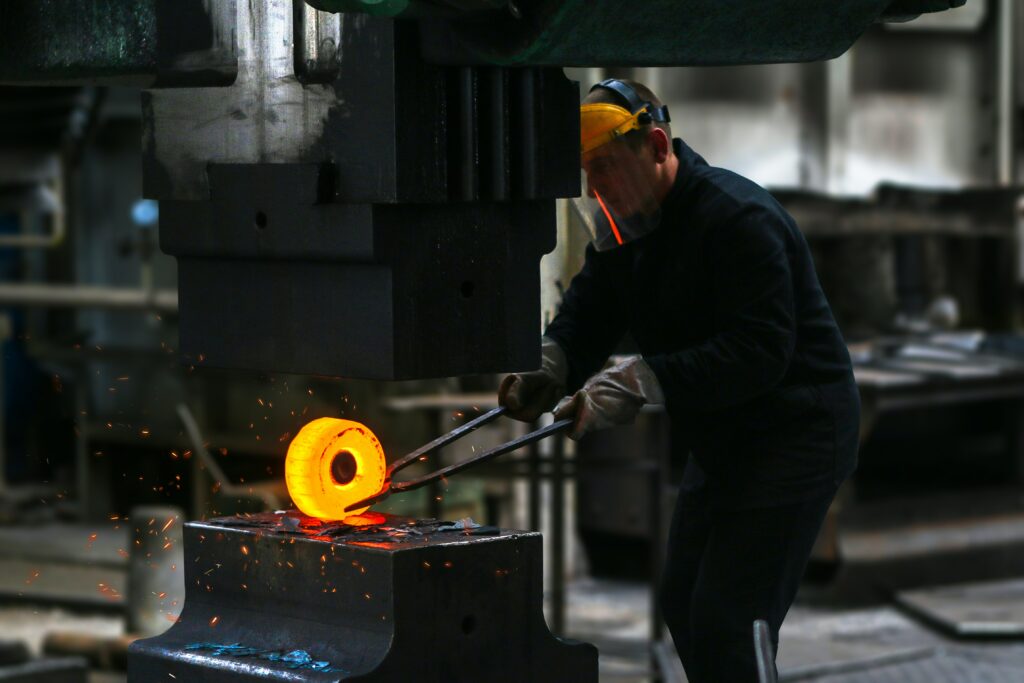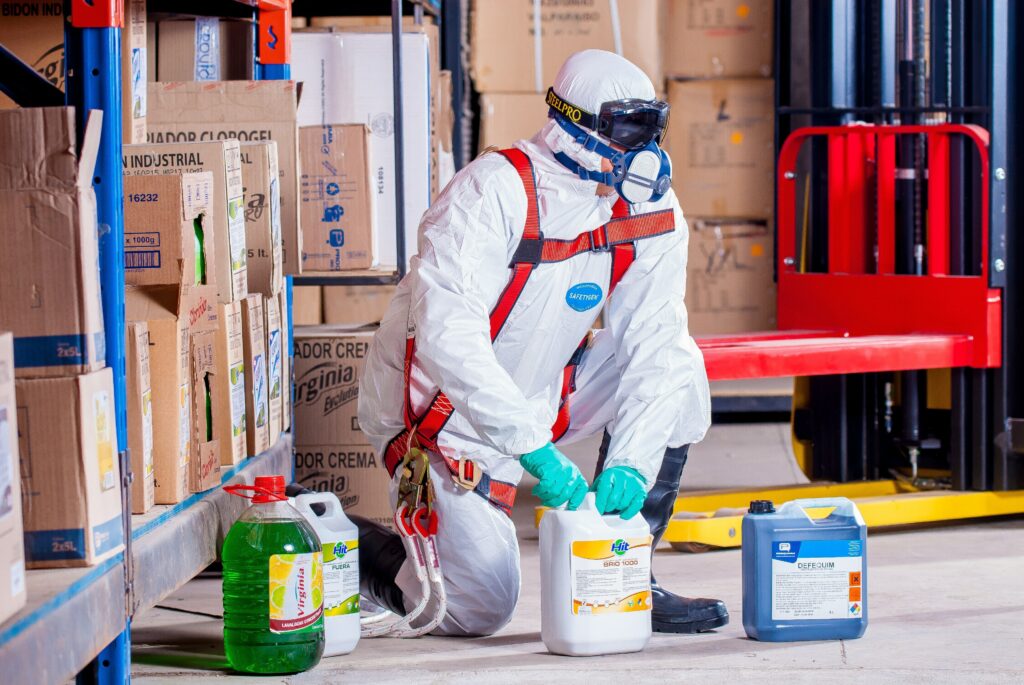PPE Regulations In The Manufacturing Industry

Personal Protective Equipment, or PPE as it is commonly known, is regulated by the UK Government Health and Safety Executive. PPE Regulations exist to ensure that every employer takes necessary steps in looking after the health and safety of their employees.
In the first instance, risks and hazards should be identified, managed, and reduced. PPE is one of the final steps in protecting employees when hazards have been minimised as much as possible.
The manufacturing industry is one such example. As many manufacturing operations use heavy machinery, chemicals. or electrical equipment there are increased risks to employees. Therefore, employers must follow PPE Regulations to ensure that if any accidents do happen, the impact is diminished through the proper use of protective equipment.
What Is PPE?

PPE (personal protective equipment) is specialised clothing, items, or accessories that protect operatives working in high-risk environments. PPE can include:
- Hi-visibility jackets
- Hard hats or helmets
- Protective gloves
- Ear defenders or ear plugs
- Masks
- Goggles or glasses
- Overalls or boiler suits
- Safety boots or shoes
The type of manufacturing environment and the specific job role will determine the warehouse PPE that workers need, and this should be covered in the workplace health and safety risk assessment.
Why Do We Need PPE Regulations?
Every workplace has its share of hazards. Some are relevant across all industries, for example fires, but some industries, like manufacturing, have more risks than others. It’s for industries like this that PPE regulations primarily exist.
In an office, reducing risk often means eliminating potential problems such as clutter obstructing doorways or regularly checking small electrical goods like PCs and printers. In manufacturing, there is only so much risk prevention that can be done because the nature of the work is hazardous.
This is where PPE comes in; because the risks can only be reduced so much, the next logical step is to ensure that should an accident happen, the consequences are minimised. There are a number of everyday risks encountered by those working in the manufacturing industry. PPE and PPE Regulations are intended to protect against these specific threats, such as:
Injuries From Machinery
Manufacturing involves lots of heavy machinery and vehicles, like fork lift trucks. Warehouse PPE, such as hi-vis vests, can make sure workers are visible to others, and therefore are not in the way of any machinery when in use.
Falls
There are often elevated areas like platforms or scaffolding in manufacturing environments, and this is where falls can happen. Wearing a hard hat or helmet reduces the impact of a fall or prevents serious head damage should something fall onto an employee.
Fire
From flammable liquids to using fire and extreme heat in the manufacturing process, fires pose a significant risk to many manufacturing operatives. Safety gloves and goggles should be worn by anyone working in these conditions, and these hazards should be detailed in a fire risk assessment.

Chemicals
Exposure to certain substances in the manufacturing sector can be very dangerous. PPE Regulations exist to control the level of exposure to staff by putting the onus on employers to provide safety equipment like masks or boiler suits.
Noise
Manufacturing warehouses or factories can be very noisy places, and there can be immediate or delayed damage to hearing. Warehouse PPE can include ear defenders or small ear plugs to reduce noise and keep ears safe.
What Are The PPE Regulations For Manufacturing?
PPE regulations were updated in 2022. The primary amendment to the PPE Regulations 2022 was that all employers must ensure their workers have sufficient information, instruction, and training on the use of PPE. This now includes casual workers, where prior PPE regulations only covered permanent employees.
The PPE Regulations exist as a final step in protecting worker’s safety. Safe systems of work and control measures should be adopted first. Control measures include things like eliminating the hazards, changing how people work, or replacing the hazard with a less dangerous option. After these options have been explored, employers can use PPE under the PPE Regulations 2022. Both the initial control measures and the correct PPE can be determined and decided during the completion of a risk assessment. A textile factory will have different safe systems of work and PPE requirements than a car plant for instance.
Once it has been established that employees need PPE at work, employers must provide the equipment at no charge to the employee and must make it readily available. There should also be adequate training on how to look after any PPE, and the PPE that is required should comply with product supply laws.
Employers are legally responsible for health and safety in the workplace and the PPE Regulations 2022 are essentially an extension of this legislation.
PPE Not Included In The PPE Regulations 2022

Some PPE falls into other legislation. Crash helmets worn by road workers come under road traffic legislation, for example. In the manufacturing industry, COSHH regulations supersede PPE regulations when people are working with any substances that are hazardous to health. This includes things like asbestos, lead, or radiation.
Employers managing staff in these industries and environments will need to follow specific guidance on the right PPE for that particular sector and have stringent health and safety measures in place.
Health And Safety From Rhino Safety
The PPE Regulations 2022 are just one area that employees in the manufacturing industry must consider. From fire safety and accident investigation to health and safety documentation and staff training, it’s important to manage and maintain a safe working environment and comply with all current legislation set out by the HSE.
Rhino Safety can take care of every aspect of health and safety for you. Our team of experts can advise on exactly what you need to provide a safe, effective and efficient workplace. Contact us for a no obligation quote to get your health and safety procedures and PPE regulations in great shape.
